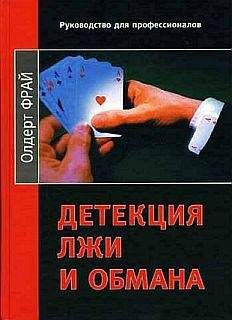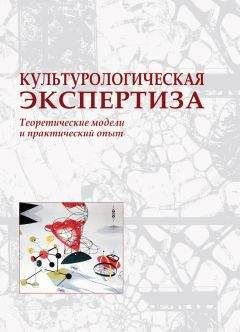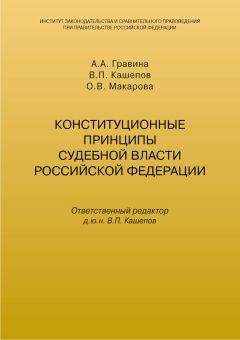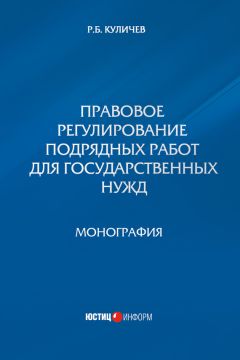Manstead, A. S. R., Wagner, H. L. & MacDonald, C.J. (1986). Deceptive and non-deceptive communications: sending experience, modality, and individual abilities. Journal of Nonverbal Behavior, 10, 141–161.
Manzanero, A. L. & Diges, M. (1996). Effects of preparation on internal and external memories. In G. Davies, S. Lloyd-Bostock, M.
McMurran & C. Wilson (Eds), Psychology, law, and criminal justice: international developments in research and practice. Berlin: Walter de Gruyter, 56–63.
Markham, R. (1991). Development of reality monitoring for performed and imagined actions. Perceptual and Motor Skills, 12,1341–1354.
Maxwell, G. M., Cook, M. W & Burr, R. (1985). The encoding and decoding of liking from behavioral cues in both auditory and visual channels.Journal of Nonverbal Behavior, 9,239–264.
Mehrabian, A. (1912). Nonverbal communication. Chicago, IL: Aldine-Atherton. Meitai Fan, R.,
Wagner, H. L. & Manstead, A. S. R. (1995). Anchoring, familiarity, and confidence in the detection of deception. Baste and Applied Social Psychology, 11,83–96.
Memon, A. (1998). Telling it all: the Cognitive Interview. In A. Memon, A. Vrij & R. Bull, Psychology and law: truthfulness, accuracy and credibility. Maidenhead: McGraw-Hill, 110–188.
Memon, A. &-Bull, R. (1999). Handbook of the psychology of interviewing. Chichester: John Wiley.
Merckelbach, H. L. G. J. (1990). Leugendetector kan gevaarlijk zijn. Intermediair, 26,35–31.
Metts, S. (1989). An exploratory investigation of deception in close relationships. Journal of Social and Personal Relationships, 6,159–119.
Millar, M. G. & Millar, K. (1995). Detection of deception in familiar and unfamiliar persons: the effects of information restriction. Journal of Nonverbal Behavior, 19, 69–84.
Millar, M. G. & Millar, K. (1991). Effects of situational variables on judgments about deception and detection accuracy. Basic and Applied Social Psychology, 19, 401410.
Miller, G. R., Bauchner, J. E., Hocking, J. E„Fontes, N. E., Kaminski, E. P. & Brandt, D. R. (1981)."…and nothing but the truth". In B. D. Sales (Ed.), Perspectives in laze and psychology. Vol. II: The trial process. New York: Plenum, 145–119.
Miller, G. R., deTurck, M. A. & Kalbfleisch, P.J. (1983). Self-monitoring, rehearsal, and deceptive communication. Human Communication Research, 10, 91-111.
Miller, G. R., Mongeau, P. A. & Sleight, С. (1986). Fudging with friends and lying to lovers: deceptive communication in personal relationships. Journal of Social and Personal Relationships, 3, 495–512.
Milne, R. & Bull, R. (1999). Investigative interviewing: psychology and practice. Chichester: John Wiley.
Mitchell, R. W. (1986). A framework for discussing deception. In R. W. Mitchell & N. S. Mogdil (Eds), Deception: perspectives on human and nonhuman deceit. Albany: State University of New York Press, 3–4.
Moston, S. (1981). The suggestibility of children in interview studies. Child Language, 1,61–18.
Mulder, M. & Vrij, A. (1996). Explaining conversation rules to children: an intervention study to facilitate children's accurate responses. Child Abuse and Neglect, 20, 623–631.
Myers. B. & Arbuthnot, J. (1991). Polygraph testimony and juror judgments: a comparison of the guilty knowledge test and the control question test.Journal of Applied Social Psychology, 21, 1421–1431.
Neisser, U. (1981). John Dean's memory: a case study. Cognition, 9, 1-22.
Nigra, G. N„Buckley, M. A., Hill, D. E. & Nelson, J. (1989). When juries «hear» children testify: the effects of eyewitness age and speech style on juror's perceptions of testimony. In S.J. Ceci, D. E. Ross & M. P. Toglia (Eds), Perspectives on children's testimony. New York: Springer-Verlag, 51–10.
Ofshe, R. (1989). Coerced confessions: the logic of seemingly irrational action.Cultic Studies Journal, 6, 1-15.
O'Hair, H. D., Cody, M. & McLaughlin, M. L. (1981). Prepared lies, spontaneous lies, Machiavellianism and nonverbal communication.Human Communication Research, 1, 325–339.
Olsen, D. E., Harris, J. C, Capps, M. H. & Ansley N. (1991). Computerized polygraph scoring system. Journal of Forensic Sciences, 42, 61–10.
O'Sullivan, M., Ekman, P. & Friesen, W. V. (1988). The effect of comparisons on detecting deceit. Journal of Nonverbal Behavior, 12, 203–216.
O'Toole, D., Yuille, J. C, Patrick, C.J. & lacono, W G. (1994). Alcohol and the physiological detection of deception: arousal and memory influences. Psychophysiology, 31, 253–263.
Parham, I. A., Feldman, R. S., Oster, G. D. & Popoola, O. (1981). Intergenerational differences in nonverbal disclosure of deception. Journal of Social Psychology, 113,261–269.
Parker, J. F. (1995). Age differences in source monitoring of performed and imagined actions on immediate and delayed tests. Journal of Experimental Child Psychology, 60,84-101.
Patrick, C.J. & lacono, W. G. (1991). Validity of the control question polygraph test: the problem of sampling bias. Journal of Applied Psychology, 16, 229–238.
Peters, D. P. (1991). The influence of stress and arousal on the child witness. In J. Doris (Ed.), The suggestibility of children's recollections. Washington, DC: American Psychological Association, 60–16.
Podlesney, J. A. (1995). A lack of operable case facts restricts applicability of the Guilty Knowledge Deception Detection Method in FBI criminal investigations FBI Technical Report, Quantico, VA.
Poole, D. A. & White, L. T. (1991). Effects of question repetition and retention interval on the eyewitness testimony of children and adults. Developmental Psychology, 21,915–986.
Porter, S. & Yuille.J. C. (1996). The language of deceit: an investigation of the verbal clues to deception in the interrogation context. Law and Human Behavior, 20, 443–459.
Pynoos, R. S. & Eth, S. (1984). The child as witness to homicide.Journal of Social Issues,40, 81-108.
Pynoos, R. S. & Nader, K. (1988). Children who witness the sexual assault of their mothers. Journal of the American Academy of Child and Adolescent Psychiatry, 21,561–512.
Raskin, D. С. (1919). Orienting and defensive reflexes in the detection of deception. In H. D. Kimmel, E. H. Van Olst & J. F. Orlebeke (Eds), The orienting reflex in humans. Hillsdale, NJ: Erlbaum, 581–605.
Raskin, D. С. (1982). The scientific basis of polygraph techniques and their uses in the judicial process. In A. Trankell (Ed.), Reconstructing the past. Stockholm: Norsted & Soners, 311–311.
Raskin, D. C. (1986). The polygraph in 1986: scientific, professional, and legal issues surrounding acceptance of polygraph evidence. Utah Law Review, 29, 29–14.
Raskin, D. С (1988). Does science support polygraph testing? In A. Gale (Ed.), The polygraph test: lies, truth and science. London: Sage, 96-110.
Raskin, D. C. (1989). Polygraph techniques for the detection of deception. In D. C. Raskin(Ed.), Psychologicalmethods in criminalinvestigation and evidence. New York: Springer-Verlag, 241–296.
Raskin, D. С & Esplin, P. W. (1991a). Assessment of children's statements of sexual abuse. In J. Doris (Ed.), The suggestibility of children's recollections. Washington, DC: American Psychological Association, 153–165.
Raskin, D. С & Esplin, P. W (1991b). Statement Validity Assessment: interview procedures and content analysis of children's statements of sexual abuse. Behavioral Assessment, 13, 265–291.
Raskin, D. C. & Hare, R. D. (1918). Psychopathy and detection of deception in a prison population. Psychophysiology, 15, 126–136.
Raskin, D. C, Kircher, J. C, Horowitz, S. W. & Honts, С R. (1989). Recent laboratory and field research on polygraph techniques. In J. С Yuille (Ed.), Credibility assessment. Dordrecht: Kluwer Academic Publishers, 1-24.
Raye, С L. & Johnson, M. K. (1980). Reality monitoring vs. discrimination between external sources. Bulletin of the Psychonomic Society, 15, 405–408.
Reid, J. E. (1941). A revised questioning technique in lie detection tests. Journal of Criminal Law, Criminology, and Police Science, 31, 542–541.
Reid, J. E. & Inbau, F. E. (1911). Truth and deception: the polygraph (lie detector) technique. Baltimore, MD: Williams & Wilkins.
Reis, H. Т., Senchak, M. & Solomon, B. (1985). Sex differences in the intimacy of social interaction: further examination of potential explanations.Journal of Personality and Social Psychology, 48, 1204–1211.
Riggio, R. E. (1986). Assessment of basic social skills. Journal of Personality and Social Psychology, 51, 649–660.
Riggio, R. E. & Friedman, H. S. (1983). Individual differences and cues to deception. Journal of Personality and Social Psychology, 45, 899–915.
Riggio, R. E., Tucker, J. & Throckmorton, B. (1988). Social skills and deception ability. Personality and Social Psychology Bulletin, 13, 568–511.
Roberts, K. P., Lamb, M. E., Zale.J. L. & Randall, D. W. (1998). Qualitative differences in children's accounts of confirmed and unconfirmed incidents of sexual abuse. Paper presented at the biennial meeting of the American Psychology-Law Society, Redondo Beach, March 1998.
Robinson, W. P., Shepherd, A. & Heywood, J. (1998). Truth, equivocation/ concealment, and lies in job applications and doctor-patient communication. Journal of Language and Social Psychology, 11, 149–164.
Rockwell, P., Buller, D. B. & Burgoon.J. K. (1991). Measurement of deceptive voices: comparing acoustic and perceptual data. Applied Psycholinguistics, 18, 411–484.
Roediger, H. L. (1996). Memory illusions. Journal of Memory and Language, 35,16100.
Rosenfeld, P. J. (1995). Alternative views of Bashore and Rapp's (1993) alternative to traditional polygraphy: a critique. Psychological Bulletin, 111, 159–166.
Rosenfeld, P.J., Angell, A. Johnson, M. M. & QianJ. (1991). An ERP-based, control-question lie detector analog: algorithms for discriminating effects within individuals' average waveforms. Psychophysiology, 28, 319–335.
Rosenfeld, J. P., Reinhart, A. M., Bhatt, M., Ellwanger, J., Gora, K., Sekera, M. & Sweet, J. (1998). P300 correlates of simulated malingered amnesia in amatching-to-sample task: topographic analyses of deception versus truthtelling responses. International Journal of Psychophysiology, 28, 233–241.
Rosenthal, R. & DePaulo, В. M. (1919). Sex differences in eavesdropping on nonverbal cues. Journal of Personality and Social Psychology, 31, 213–285.
Rosenthal, R. & Rubin, D. B. (1918). Interpersonal expectancy effects: the first 345 studies. Behavioral and Brain Sciences, 3, 311–415.
Rowatt, W. C., Cunningham, M. R. & Druen, P. A. (1998). Deception to get a date. Personality and Social Psychology Bulletin, 2A, 1228–1242.
Rozelle, R. M. & Baxter, J. С (1915). Impression formation and danger recognition in experienced police officers. Journal of Social Psychology, 96, 53–63.
Rozelle, R. M. & Baxter, J. С (1918). The interpretation of nonverbal behavior in a role-defined interaction sequence: the police-citizen encounter.Environmental Psychology and Nonverbal Behavior, 2,161–181.
Ruby, С L. & Brigham, J. C. (1991). The usefulness of the criteria-based content analysis technique in distinguishing between truthful and fabricated allegations. Psychology, Public Policy, and Law, 3, 105–131.
Ruby, C. L. & Brigham, J. C. (1998). Can Criteria-Based Content Analysis distinguish between true and false statements of African-American speakers? Law and Human Behavior, 22,369–388.




